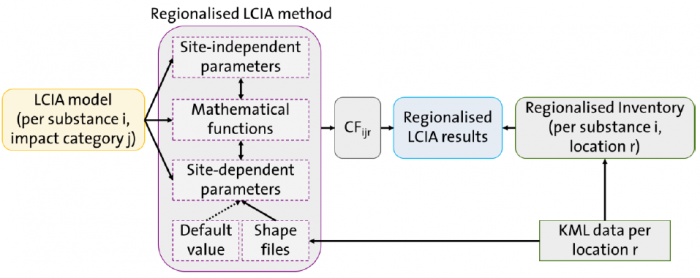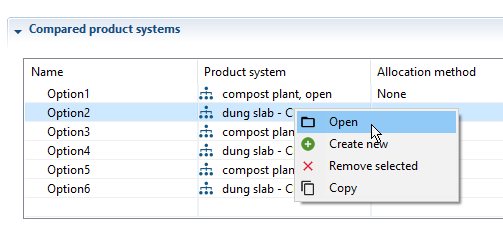
(2015) Cumulative energy demand in LCA article footprint notes (1): “The maximum systematic deviation in fossil CED values between approaches using the higher and the lower heating value, respectively, is about 10%.” Also, in the article text, authors note: “The systematic bias in fossil……is less than 10%.” Also, the older _Frischknecht et al. The HHVs include the evaporation energy of water present in the flue gas.

#Openlca lcia method download#
Simply download the JSON-LD zipped file and import it into your LCI database to apply when running calculations. This method was created to support the application of the CED method to FEDEFL-adapted LCI data FLCAC. The CED method is available in three file formats: JSON-LD, ILCD, and the openLCA software.

This Methods Folder also contains files for a cumulative energy demand (CED) LCI method for FEDEFL-adapted datasets. Please note that if you add any new datasets that contain additional FEDEFL-adapted elementary flows to your database, these "NO FLOWS" LCIA methods need to be re-imported each time that is, the "NO FLOWS" method should be deleted from the database and then, re-imported to ensure any new flows are captured. The zipped JSON file must be imported to an existing LCI database using the FEDEFL to function as an LCIA method. These "NO FLOWS" method files allow for faster download, import, and application of the LCIA methods to FEDEFL-adapted databases (e.g., USLCI, EPA Heavy Equipment).
#Openlca lcia method full#
In other words, these files do not include the entire ReCiPe and TRACI flow lists, but they do reflect the full method. These files are LCIA methods that will read your existing LCI database and apply factors for the FEDEFL-adapted elementary flows it contains.

This Methods Folder contains the ReCiPe 2016 - Midpoint_H_json_NOFLOWS.zip and TRACI_2.1_json_NOFLOWS.zip files that can be quickly downloaded and imported into an openLCA database.
#Openlca lcia method plus#
While the full FEDEFL-adapted ReCiPe 2016 E, H, and I plus TRACIv2.1 are available on the FLCAC server, some users have experienced delays in downloading, importing, and running calculations with these methods.įor the convenience of USLCI Database end-users, these faster workaround resources (see below) are provided for running LCI and LCIA calculations on USLCI (and other FEDEFL-adapted FLCAC data) in openLCA. Life cycle inventory (LCI) and life cycle impact assessment (LCIA) methods are also being converted to be compatible with the FEDEFL being adapted by FLCAC. Since the Winter 2019 update, the USLCI Database has converted to using the Federal Elementary Flow List (FEDEFL). :earth_americas: As a repository on the Federal LCA Commons (FLCAC), the US Life Cycle Inventory (USLCI) Database is adapting the FLCAC emerging conventions and standards for interoperability and harmonization (please see the USLCI Data Submission Handbook as it evolves to reflect those of the FLCAC draft).


 0 kommentar(er)
0 kommentar(er)
